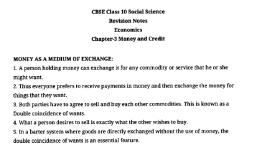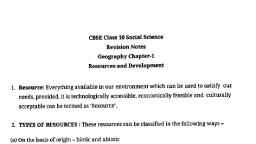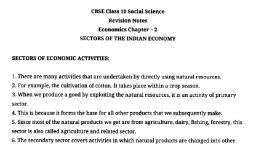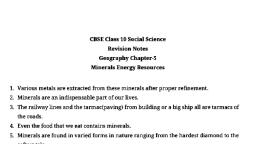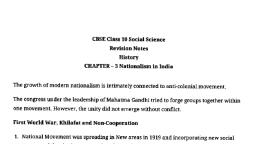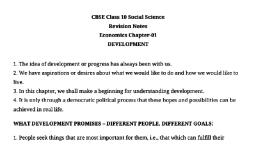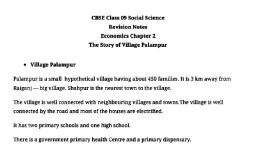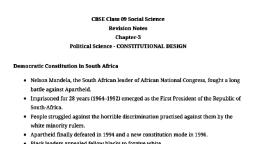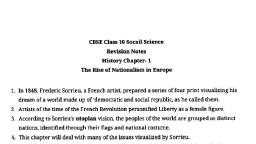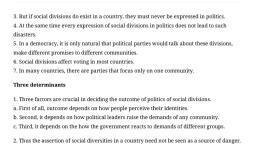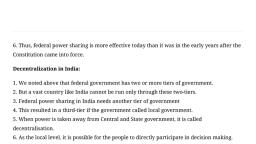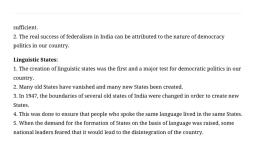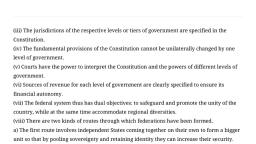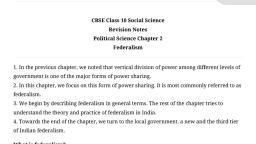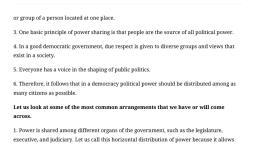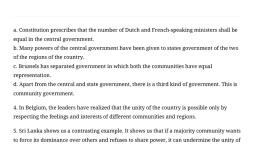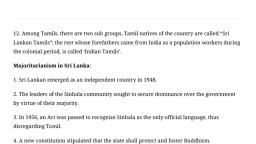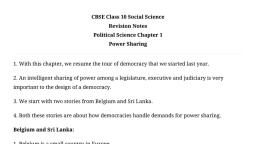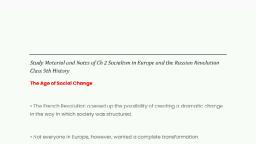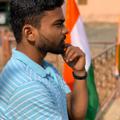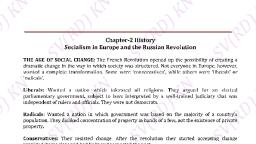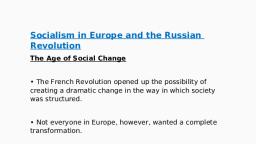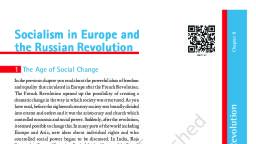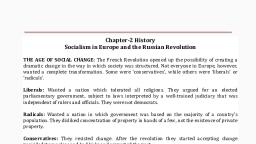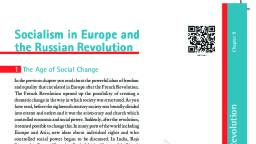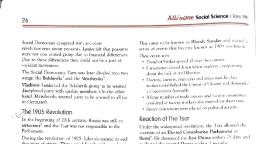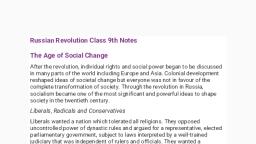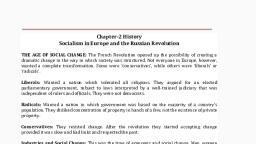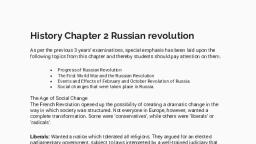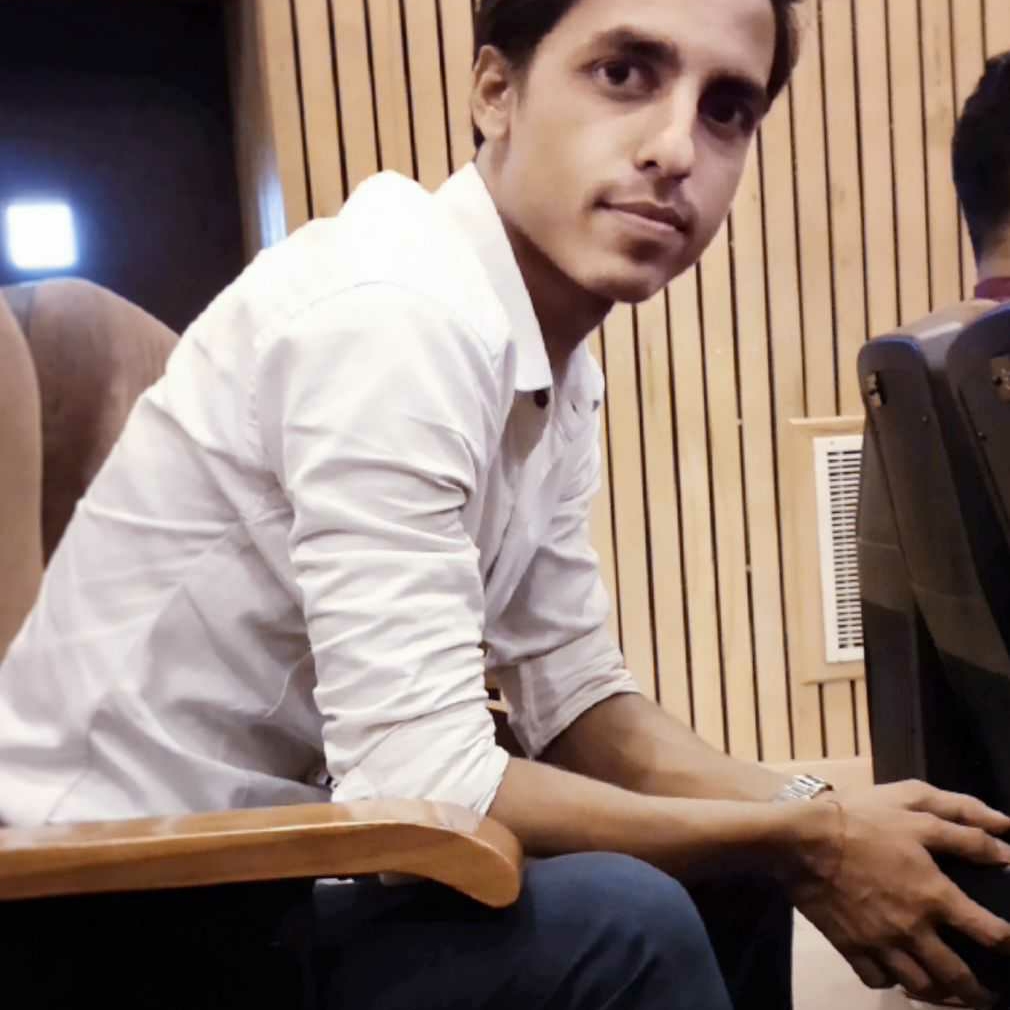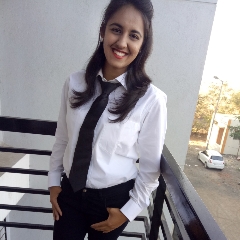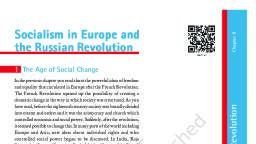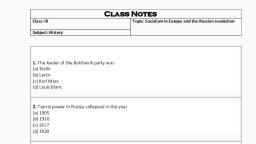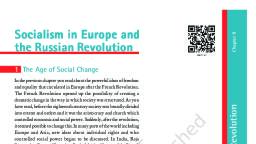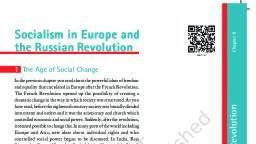Page 1 :
CBSE Class 09 Social Science, Revision Notes, , Chapter-2, History- $oCLALISM IN EUROPE AND THE RUSSIAN REVOLUTION, , THE AGE OF SOCIAL CHANGE, , The French Revolution opened up the possibility of creating a dramatic change in the way in, which society was structured. Not everyone in Europe, however, wanted a complete, transformation. Some were 'conservatives, while others were liberals' or 'radicals'., , Liberals: Wanted a nation which tolerated all religions. They were against the uncontrolled, power of the dynastic rulers.They wanted rights for individuals.They argued for an elected, parliamentary government, subject to laws interpreted by a well trained judiciary that was, independent of rulers and officials. They were not democrats because they did not believe in, universal adult franchise., Radicals: Wanted a nation in which government was based on the majority of a country's, population. They disliked concentration of property in hands of a few, not the existence of, , private property., Conservatives: They resisted change. After the revolution they started accepting change, provided it was slow and had links and respected the past., , Industries and Social Change: This was the time ofeconomic and social change. It was also, the beginning of the industrial revolution. Men, women and children were pushed into, factories for low wages, Liberals and radicals who were factory owners felt that efforts must, be encouraged so that benefits of industrialization should be passed on to workers., Socialism in Europe: Socialists were against private property and saw it as root of social, evils.They had different visions of the future. Some believed in cooperatives, some, demanded that governments must encourage cooperatives., Karl Marx and Friedrich Engels added that industrial society was capitalist. Marx believed, that a socialist society would free the workers from capitalism. This would be a communist, , society.
Page 2 :
Support for Socialism :Socialists formed an organization called 'Second International' to, spread socialist ideas. Workers in Germany and England began forming associations to fight, for better living conditions. They set up funds for members in distress, reduction of working, , hours and right to vote., THE RUSSAN REVOLUTION, , In 1914, Tsar Nicholas II ruled the Russian, , empire., , Economy and Society: Most of the Russian population( about 85 6) were agriculturalist., Industries were being set up which was mostly private property of industrialists. Workers, were divided into groups but they did unite to strike work when they were dissatisfied., , Peasants had no respect for nobility, very unlike the French peasant. Russian peasants were, the only peasant community which pooled their land and their commune divided it., Socialism in Russia: All political parties were illegal in Russia before 1914., The Russian Socialist Democratic Labour Party was formed in 1898. It struggled to give, peasants their rights over land that belonged to nobles. As land was divided among peasants, periodically which makes them natural socialist and it was felt that peasants and not, workers would be the main source of the revolution. But Lenin did not agree with this as he, , felt that peasants were not one social group. The party was divided into Bolsheviks and, , Mensheviks., The 1905 Revolution : Russia was an autocracy. The Tsar was not subject to the parliament., Liberals wanted to end this state of affairs. They worked towards demanding a constitution, during the Revolution of 1905., , Bloody Sunday: Prices ofessential goods rose so quickly by 1904 that the real wages, declined by 20%. During this time, four members of the Putilov Iron Works were dismissed., Action was called for. Over 110,000 workers in St. Petersburg went on strike demanding a, reduction in working hours and increase in wages. The procession was led by Father, Gapon.This procession was attacked by the police and Cossacks. Over 100 workers were, , killed. Strikes took place as a reaction. People demanded a constituent assembly., The Tsar allowed the creation of an elected consultative Parliament or Duma. The Tsar, dismissed the first Duma within 75 days and announced the election ofa second Duma.
Page 3 :
The First World War and the Russian Empire: In Russia, the war was initially very popular, , but later the support grew thin. Anti-German sentiments ran high. Russian armies lost badly, in Germany and Austria. There were 7 million casualties and 3 million refugees in Russia., , The war also affected the industry. There was labour shortage, railway lines were shut down, and small workshops were closed down. There was shortage of grain and hence of bread., THE FEBRUARY REVOLUTION IN PETROGRAD, , Events, In the winter of 1917, Petrograd was grim. There was food shortage in the workers, , quarters., 2 2 February: a lockout took place at a factory. Workers of 50 other factories joined in, sympathy. Women also led and participated in the strikes. This came to be called, the International Women's Day., , The government imposed a curfew as the quarters ofthe fashionable area and official, buildings were surrounded by workers., O n the 24th and 25th, the government called out the cavalry and police to keep an eye, on them., .On 25th February, the government suspended the Duma and politicians spoke against, this measure. The people were out with force once again., O n 27th, the police headquarters were ransacked., Cavalry was called out again however it refused to fire on demonstrators., , An officer was shot at the barracks ofa regiment and other regiments mutinied,, voting to join the striking workers gathered to form a soviet or council. This was the, Petrograd Soviet., , A delegation went to meet the Tsar, military commanders advised him to abdicate., The Tsar abdicated on 2nd March., AProvincial Government was formed by the Soviet and Duma leaders to run the, , country., The people involved were the parliamentarians, workers, women workers, soldiers and, military commanders., , Effects
Page 4 :
Restrictions on public meetings and associations were removed., , Soviets were set up everywhere., I n individual areas factory committees were formed which began questioning the, way industrialists ran their factories., , Soldiers' committees were formed in the army., .The provisional government saw its power declining and Bolshevik infuence grow. It, decided to take stern measures against the spreading discontent., . I t resisted attempts by workers to run factories and arrested leaders., , Peasants and the socialist revolutionary leaders pressed for a redistribution of land., Land committees were formed and peasants seized land between July and September, 1917., , OCTOBER REVOLUTiON, , 16th October 1917--Lenin persuaded the Petrograd Soviet and Bolshevik Party to, agree to a socialist seizure of power. A Military Revolutionary Committee was, appointed by the Soviet to organise seizure., , .Uprising began on 24th October. Prime Minister Kerenskii left the city to summon, , troops., Military men loyal to the government seized the buildings of two Bolshevik, newspapers. Pro-government troops were sent to take over telephone and telegraph, offices and protect the Winter Palace., , I n response Military Revolutionary Committee ordered to seize government offices, and arrest the ministers., .The 'Aurora' ship shelled the Winter Palace. Other ships took over strategic points., , By night the city had been taken over and ministers hadsurrendered., All Russian Congress ofSoviets in Petrograd approved the Bolshevik action., Heavy fighting in Moscow-by December, the Bolsheviks controlled the MoscowPetrograd area., The people involved were Lenin, the Bolsheviks, troops (pro-government)., , Effects, .Most industry and banks were nationalised in November 1917.
Page 5 :
Land was declared social property and peasants were allowed to seize the land ofthe, , nobility., .Use of old aristocratic titles was banned., New uniforms were designed for the army and officials., Russia became a, , one, , party state., , Trade unions were kept under party control., , A process of centralised planning was introduced. This led to economic growth., Industrial production increased., A n extended schooling system, , developed., , Collectivisation of farms started., The CivilWar-When the Bolsheviks ordered land redistribution, the Russian army began, to break up. Non-Bolshevik socialists, liberals and supporters of autocracy condemned the, , Bolshevik uprising. They formed their troops and were called Greens' which would fight, against Bolshevik 'Red'. The pro Tsar Whites" controlled most of the Russian empire. They, were supported by French, American, British and Japanese troops. Al these fought a war, with the Bolsheviks., Making a Socialist Society- The Bolsheviks kept industries and banks nationalised during, , the civil war. A process of centralised planning was introduced. Rapid construction and, industrialisation started. An extended schooling system developed., , Stalin and Collective Farming-Stalin believed that rich peasants and traders stocked, supplies to ereate shortage of grains. Hence, collectivisation was the need of the hour. This, , system would also help to modernize farms. Those farmers who resisted collectivisation, were punished, deported or exiled., GLOBAL INFLUENCE, By the 195os, it was recognised in the country and outside that everything was not in keeping, , with the ideals of the Russian revolution. Though its industries and agriculture had, developed and the poor were being fed, the essential freedom to its citizens was being, denied. However, it was recognised that social ideals still enjoyed respect among the, Russians. But in each country the ideas of socialism were rethought in a variety of different, ways.

